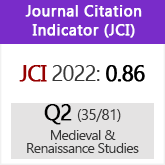O moio-medida e o moio dos preços em Portugal nos séculos Xl a XIII
DOI:
https://doi.org/10.3989/aem.2005.v35.i1.134Keywords:
Modius, Capacity measures, Equivalences, Prices, PortugalAbstract
In this paper, the value of the modius (modio, moyo, moio) in Portugal in the 11th to the 13th centuries is studied. By this time, the modius was both a measure of capacity and a unit used in the specification of prices. The author concludes that, while the modius-measure had a capacity not under the horse charge (210 to 220 litters) in the legal systems used in Portugal from the end of the 11th century onwards, some smaller modii continued to be used in rural areas far away from the main urban centers. These smaller modii had a capacity around 50 to 75 litters. With respect to the modius-price, the information gathered by the author indicates a value between 25 and 55 litters of cereal. Therefore, it becomes clear that the modius-price was not equivalent to the standard modius-measure, although it could be equivalent to the smaller modii still in use in rural areas. The gathered evidence also suggests that, from the 10th to the 13th centuries, independently of inflation, the modius-price remained approximately equivalent to the currency unit known as solidus
Downloads
Download data is not yet available.
Downloads
Published
2005-06-30
How to Cite
Seabra Lopes, L. (2005). O moio-medida e o moio dos preços em Portugal nos séculos Xl a XIII. Anuario De Estudios Medievales, 35(1), 25–46. https://doi.org/10.3989/aem.2005.v35.i1.134
Issue
Section
Miscelaneous Studies
License
Copyright (c) 2005 Consejo Superior de Investigaciones Científicas (CSIC)

This work is licensed under a Creative Commons Attribution 4.0 International License.
© CSIC. Manuscripts published in both the printed and online versions of this Journal are the property of Consejo Superior de Investigaciones Científicas, and quoting this source is a requirement for any partial or full reproduction.All contents of this electronic edition, except where otherwise noted, are distributed under a “Creative Commons Attribution 4.0 International” (CC BY 4.0) License. You may read here the basic information and the legal text of the license. The indication of the CC BY 4.0 License must be expressly stated in this way when necessary.
Self-archiving in repositories, personal webpages or similar, of any version other than the published by the Editor, is not allowed.














